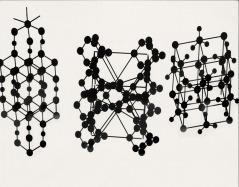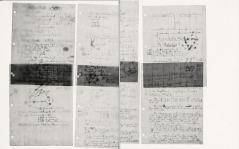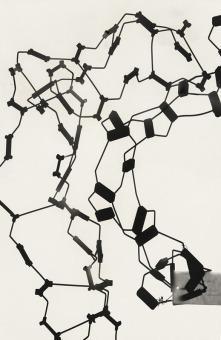This past spring, Thomas Brennan, a photographer and the chair of Art and Art History at the University of Vermont, paid us a visit to capture his own set of images of Pauling’s models. Brennan’s research concerns the history of symbolic representation in the history of science with three-dimensional modelling, work which has taken him to institutions and repositories including the Laboratory of Molecular Biology at Cambridge, the Museum of the History of Science at Oxford, the Museum of Science in London, and the M.I.T. Museums.
Brennan’s photographs of Pauling’s models were captured using a low-light technique that he has used in the past for a project that he calls “Collecting Shadows.” On his website, Brennan provides this bit of background for the series:
Scotophorus pro phosphoro inventus, written by Johann Schulze in 1727, was the origin for experiments with light-based imaging that would lead to William Henry Fox Talbot’s experiments with camera-less photogenic drawings. The ability to record ‘marks of light’ without a lens, first explored in the eighteenth and nineteenth centuries, provides the foundation for my series of light-based images of museum objects from the history of science titled Collecting Shadows.
A sampling of the images that Brennan captured during his visit to the Pauling Papers is included here.
 Low-light photographs of ball-and-stick crystal structures, ca. 1930s.
Low-light photographs of ball-and-stick crystal structures, ca. 1930s.  Manuscript leaves from Pauling’s work on the proposed triple-helical structure of DNA, 1952.
Manuscript leaves from Pauling’s work on the proposed triple-helical structure of DNA, 1952.  A protein structure built out of aluminum ingots, ca. 1940s.
A protein structure built out of aluminum ingots, ca. 1940s.
